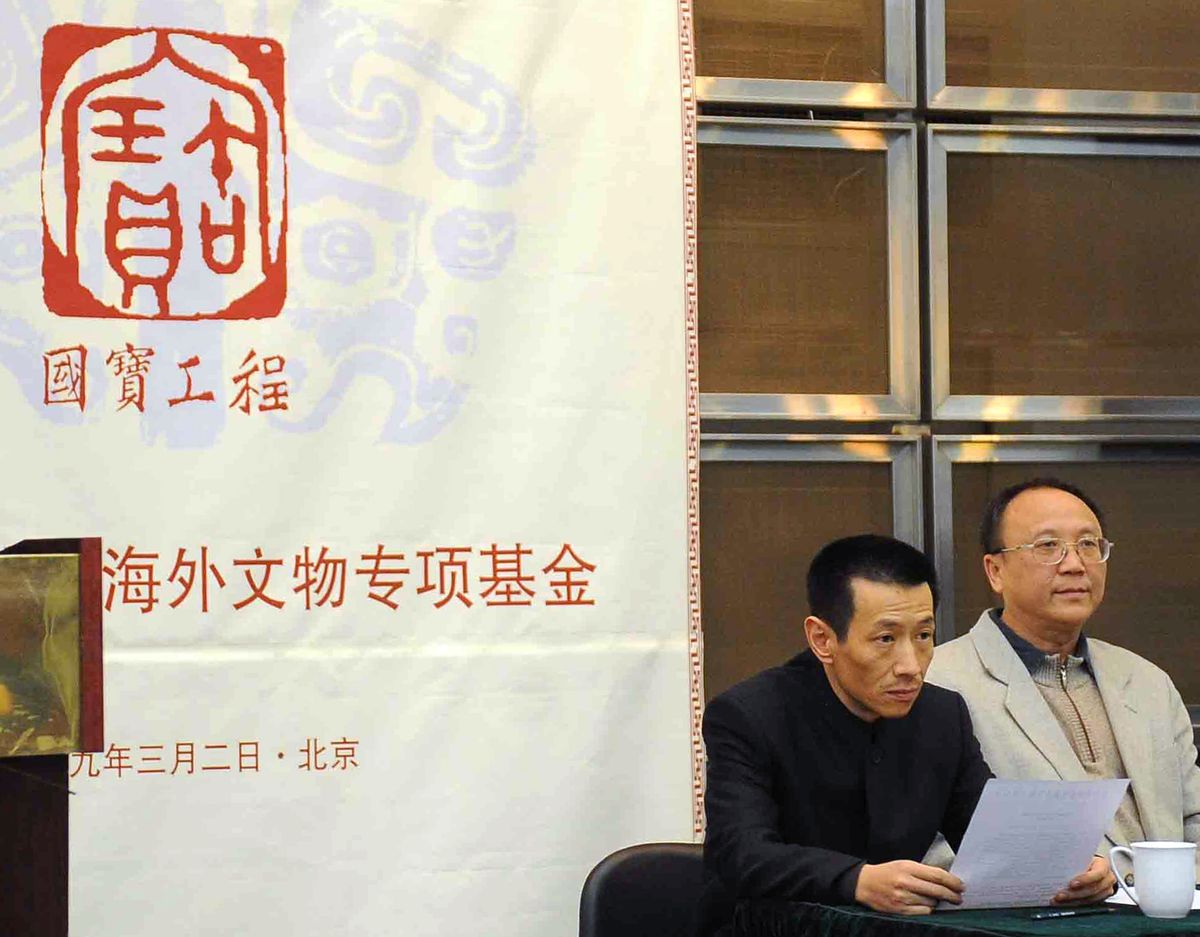Chinese collector says he faked bids for bronze sculptures

BEIJING – A Chinese art collector revealed himself Monday as the man behind the winning bids for two imperial bronzes auctioned at Christie’s over Beijing’s objections, then announced he had no intention of paying the $36 million.
The bogus bids were the latest attempt by both the Chinese government and private citizens to block the sale of the pieces, which disappeared when French and British forces sacked and burned the imperial Summer Palace outside Beijing in 1860 at the end of the second Opium War. Chinese view the devastation of the palace as a national humiliation.
Auction house owner Cai Mingchao said he put in telephone bids for the bronze rat and rabbit heads – part of a collection owned by the late French designer Yves Saint Laurent – during last week’s auction in Paris. The three-day sale netted more than $484 million.
“What I need to stress is that this money cannot be paid,” Cai told a news conference in Beijing. “At the time, I was thinking that any Chinese would do this if they could … I only did what I was obliged to.”
The Chinese government said Monday it had nothing to do with the bids. The government had tried to stop the sale, saying the bronzes should be returned instead. Christie’s stood by its right to sell them, and a French court rejected a Chinese group’s petition to block the sale.
Julian Radcliffe, chairman of the London-based Art Loss Register, which maintains the world’s largest database on stolen, missing and looted art, said China had a moral claim to the bronzes, but not a legal one.
“Legally there is no question that the French are in the right,” he said. “Items taken by Napoleon to fill the Louvre, items taken in the 1860s – there is no question, those cannot legally be reclaimed by China. However, there is a moral and political dimension to this.”
In a statement, Christie’s said, “We are aware of today’s news reports. As a matter of policy, we do not comment on the identity of our consignors or buyers, nor do we comment or speculate on the next steps that we might take in this instance.”
Cai’s fake bids apparently were made in cooperation with China’s Lost Cultural Relics Recovery Program, a group dedicated to repatriating looted Chinese art. On its Web site, the group describes itself as a nongovernmental cultural body set up by collectors and scholars, and Cai serves as an adviser.
“This is an extraordinary method taken in an extraordinary situation, which successfully stopped the auction,” the group’s vice director, Niu Xianfeng, said at the press conference.
China has intensified efforts to retrieve looted relics. When official protests against similar auctions failed, state-owned companies and rich Chinese individuals have stepped in to buy the pieces.
However, China’s State Administration of Cultural Heritage put out a statement discouraging private collectors from buying the bronzes and returning them to China. The agency said Monday it had no idea about plans for a bogus bid.
“We did not know about this until the news conference this morning,” said a woman who answered the phone at the administration. She declined to give her name, in line with official policy. “The people and the fund have absolutely no connections with us.”
The stunt was admirable but too extreme, said Wang Linmao, a history professor at Zhejiang University who specializes in the late Qing period – the era when the imperial palace was sacked.
“It is now almost as if every time a looted Chinese relic gets auctioned overseas, Chinese people feel compelled to buy it back,” Wang said. “I don’t think this should be the case. It is a good thing if we can get them back, because it is about washing off the 100-year national humiliation. But it’s not like we have to buy them back at all costs.”